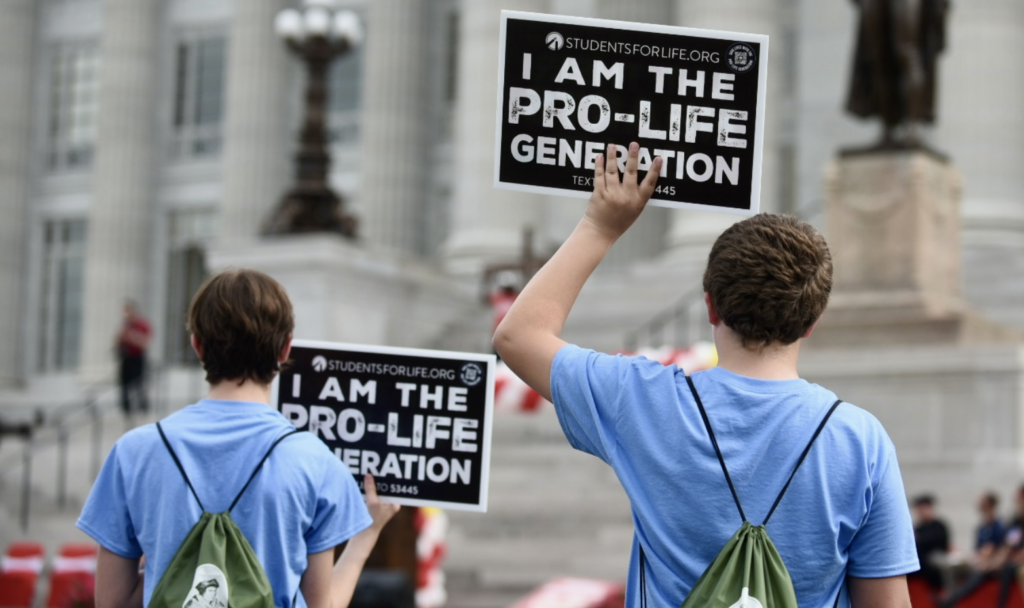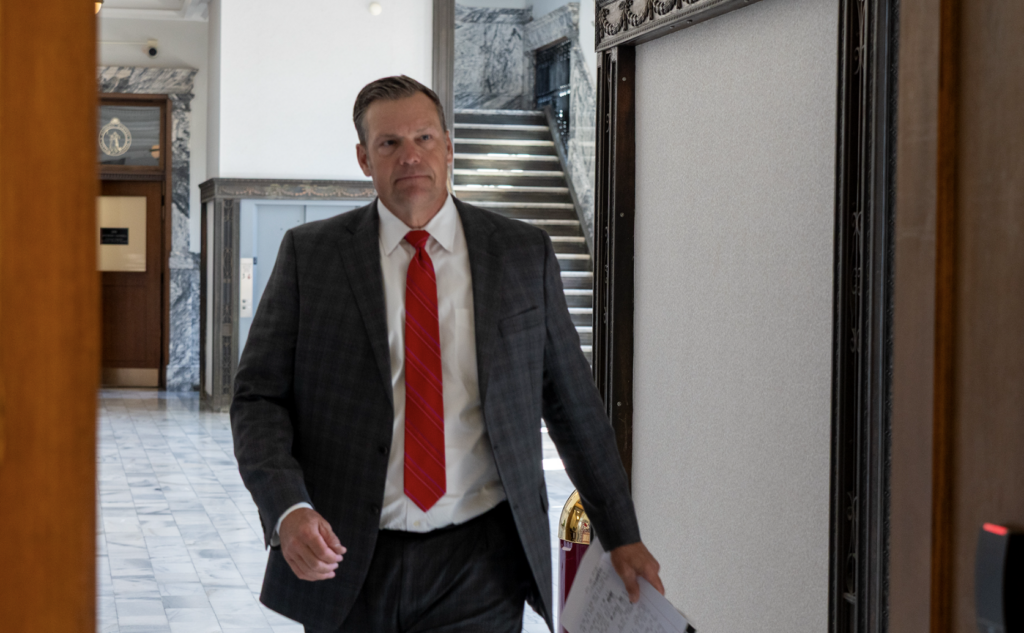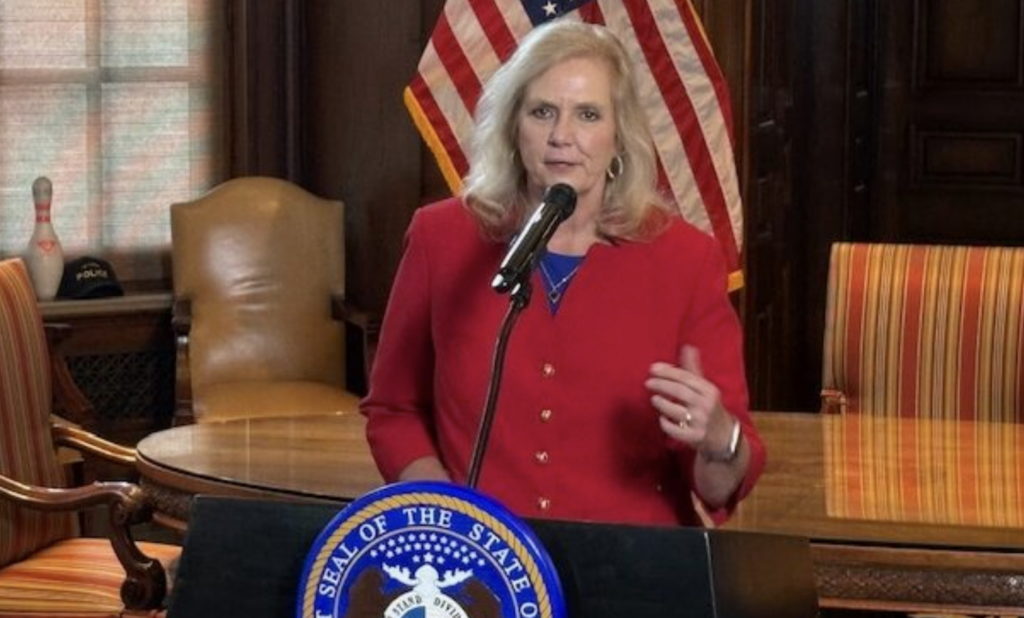Across state line and following historic redlines: Kansas City food deserts expand as grocery stores close
Residents deal with mile-long walks, corner store diets and poorer health as grocers are forced to close unprofitable locations on both sides of the state line.

Phillip Ramsey, a master gardener, stands in the Ruby Jeans Community Garden at 29th Street and Wabash Avenue in Kansas City, Missouri, where he grows and distributes fresh produce to neighbors. (Thomas White/The Beacon)
Phillip Ramsey is a master gardener who’s planting fall produce in one of the community gardens he manages. It’s just two blocks from the Sun Fresh grocery store that operated at 31st Street and Prospect Avenue until it shut down in August.
The retired Army veteran and Purple Heart recipient has lived in the neighborhood for 35 years. He’s seen the area when it was a food desert before and is troubled by the desert’s return.
Takeaways
- Two major grocery closures are creating expanded food deserts affecting thousands of Kansas City area residents on both sides of the state line.
- Current food desert patterns mirror 1930s redlining maps, with formerly redlined areas 107% to 149% more likely to be food deserts today.
- Health consequences can be severe and living in a food desert correlates with higher rates of diabetes, obesity and reduced life expectancy.
Ramsey is trying to do his part by growing and giving away more than 1,000 pounds of produce. But he knows that’s only a bandage for a bigger wound. He is worried for his neighbors — often elderly or low-income — who will now have a harder time finding nutritious food.
“I’ve seen an uptick in neighbors needing the service of the community garden,” Ramsey said. “The impact of the store closing is being felt throughout the neighborhood, and we’ll get by because we always get by. But I’m beginning to see resentment set in, and that scares me.”
The Sun Fresh closure is just part of a growing urban food desert and food insecurity problem in the area. Six miles away in downtown Kansas City, Kansas, the Merc Co+op will close at the end of the year, returning that area to food desert status after just five years of operation.
“I live in a food desert if I am not able to get to a full service grocery store easily,” said Kristina Bridges, a research assistant professor in University of Kansas Medical Center’s department of family medicine and community health. Food insecurity is defined as whether “in the past 12 months, have you run out of food before you could get more? If the answer is yes, you have food insecurity.”
Together, the two grocery store closures will hamper thousands of residents in low-income and low-food-access areas that Dina Newman from the Center for Neighborhoods calls “communities of concern.”
Tight profit margins at grocery stores mean that grocers often avoid the risk of investing in these communities of concern. As a result, food desert maps follow disinvestment patterns that resemble historic redlining.
Those living in a food desert or experiencing food insecurity have measurably worse health outcomes including a life expectancy shortened by 2.29 years, according to American Cancer Society researchers. While some like Ramsey work to provide short-term community-level solutions, Bridges says broader long-term approaches are also needed.

Logistics of a food desert
With the two local grocery stores closing, new food deserts will emerge.
In the late 1980s, Newman was a single mother without a car. She knows the struggle of navigating a food desert firsthand.
“So if I’m working … I have to plan it out to get to the bus to get over to a store. Then l’m waiting at the bus stop, which is sometimes just a patch of dirt,” Newman said. “Then I have to transfer buses with a full load of groceries. What about my child, are they with me? Am I safe alone after dark? You are juggling all this just trying to get to the grocery store, that’s the challenge.”
She recalled one incident during the winter when an ice storm came while she was shopping. Out of necessity, she put her socks over her shoes in an attempt to get some traction and not fall and spill her groceries.
“This is all your hard-earned money in these groceries, you’ve got to get them home,” she said.
Ramsey says that many people in his neighborhood now have to walk up to a mile or take the bus to get fresh food at places like Aldi or Happy Foods. He says the effort required to get nutritious food means that many with limited means will just turn to more convenient options like corner stores and gas stations.
“I can’t throw a rock without hitting a fried chicken spot,” Ramsey said. “So we’re eating processed food, cheap food that we can get our hands on, because access to fresh healthy food is not an option for us.”
Historic patterns with current consequences
While food deserts and food insecurity touch both urban and rural populations, there is a racial disparity. According to a 2024 USDA report, 8% of white households face food insecurity while the number is 21% for Black households and 16.9% for Hispanic households nationwide.
Notably, that report is the last USDA survey on food security for the foreseeable future. The Trump administration has labeled the report “redundant, costly, politicized, and extraneous.”
If a census tract was redlined as “declining” or “hazardous” in the 1930s Home Owners’ Loan Corp. maps, that translated into a 107% and 149% increase in the likelihood that the same census tract would be a food desert today, according to a 2022 study covering 102 U.S. cities.
“It just feels like this is all intentional,” Ramsey said.
Bridges says KU Medical system has been mapping food insecurity among patients since 2017 and sees a strong correlation between rates of Type 2 diabetes, modern food insecurity and historic redlining.
“It’s really no surprise that the bubbles (on the map) overlapped,” said Bridges. “We have big food insecurity bubbles, big Type 2 diabetes bubbles. … They were north, where downtown KCK and the Merc is, and the east side where the Sun Fresh was. …If we pull out our old redlining maps, it’s exactly the same pattern.”
The seemingly structural nature of the problem has led many advocates to use the term “food apartheid” instead of “food desert,” since a desert occurs naturally while food insecurity appears to occur as the result of man-made systems.
“I knew what food apartheid was before food apartheid was a phrase,” Ramsey said. “You go to certain places and the quality of the food is vastly different. … We’re forced to take the scraps and it’s an affront to our personhood.”
The lack of access to nutritious food has hurtful consequences. Chronic diseases like obesity, hypertension and Type 2 diabetes become more common, but so do complications from deficiencies in fiber and good gut bacteria that are primarily found in fresh fruits and vegetables.
Bridges says understanding these connections between food deserts, food insecurity and chronic disease is something that even some doctors need education on. She recalls speaking to a practitioner who said they didn’t believe there was a problem with food insecurity because “his patients were all fat.”
“That completely misses the mark,” Bridges said. “Just the long-term chronic stress of being food insecure or living in a food desert releases cortisol in your body that can cause a host of things … including obesity.”
A 1930s Home Owners’ Loan Corporation (HOLC) “redlining” map of Greater Kansas City shows how neighborhoods were color-coded by perceived investment risk, with red areas deemed “hazardous” and systematically denied access to mortgages and financial services. When compared to modern food desert maps, the patterns reveal striking similarities, demonstrating how discriminatory housing and lending policies from nearly a century ago continue to shape present-day food access and economic inequality.
Economic reality of grocery stores closing
Both the Prospect Sun Fresh and the KCK Merc Co+op faced the economic headwinds of operating a grocery store in a historically disinvested neighborhood. While each faced unique issues with their locations, they shared similar challenges.
The Prospect Sun Fresh’s former operator — nonprofit developer Community Builders, which also runs Sun Fresh at 4209 E. 50th Terrace — said they faced a litany of operating challenges at the Prospect location and lost approximately $5 million trying to keep the store open from February 2022 to August 2025.
“We stepped up to fill a void that no one else was going to fill,” said Community Builders CEO Emmet Pearson at an Urban Summit meeting after the Prospect Sun Fresh closed. “The previous operator reached out to us because he tried to get other operators to come forward and no one else would.”
The city had previously invested $17 million to $18 million into shopping center infrastructure at Linwood Boulevard and Prospect Avenue and was the landlord of the Sun Fresh location. Pearson says that meant Community Builders couldn’t fully control the environment around the store due to limitations in their lease. Board of directors member Kiki Curls says that directly hurt business.
“It’s the element that’s outside the store that impacted us doing business,” said Curls at the Urban Summit meeting. “When you have open prostitution, open drug use and drug sales, when you have folks that pull down their pants and defecate in front of the door when people are coming in store, people do not come back.”
Community Builders themselves received $750,000 in direct cash subsidy from the city to help at the Prospect Sun Fresh in May 2025 along with $161,500 in rent relief. Pearson and the board of directors say that was a drop in the bucket compared to their operational challenges.
Security was $5,000 to $6,000 a week with the cost of a single off-duty police officer paid between $60 and $90 an hour. The store had a “persistent sewer smell” for months that they say stemmed from infrastructure issues. Community Builders said these issues combined to drive sales down and customers away, which ultimately led to taking a loss and closing the store.
Across the state line, the Merc Co+op is in its waning days. The Unified Government of Wyandotte County and Kansas City, Kansas, had invested approximately $7 million to bring in the Lawrence-based fresh grocer.
After three years of planning and five years of operation the Merc announced in June that it would close at the end of this year. Merc cited poor financial performance at the downtown KCK location and that operating it further could hurt the long-term viability of the cooperative, which has operated in Lawrence for 50 years.
Contributing to the closure was the failure of promised nearby redevelopment, which was intended to increase population density, median wages and foot traffic in the area, needed to help support the grocer. A $25 million redevelopment of the Reardon Convention Center across the street from the Merc never came to fruition after several extensions. And a nearby $145 million Minnesota Avenue Triangle mixed-use project fell through, with developers citing funding gaps.

Patrick Shabram, a location research consultant with G2G analytics who helps grocers identify viable locations by projecting future sales, says there are many considerations to determining whether a grocery store will succeed. He said the top three indicators that most grocery stores look for are population density per area competitor, income level and the education level of a neighborhood.
As a general rule, Shabram said a grocery store targets $100,000 in sales per square foot in the first year of operation. Notably, the net profit margin for grocery stores nationwide is just 1.7% according to FMI, a food industry association, which means that even a slight dip in sales could doom a store.
Shabram said the challenge grocers face in opening in an underserved area is balancing the social good of opening a store in an area that needs it while also maintaining profitability.
“I provide the most accurate sales forecast I can so that there can be the proper expectations,” Shabram said. “Then I’m basically saying do what you can to make it work.”
He says that often means looking into grants and incentives to make it through the first couple of lean years while the store establishes itself. He says other ways grocery stores look to improve profitability are pulling in shoppers from neighboring areas or selling higher-margin items like prepared meals or retail. But he says visibility, access, parking lot size, the store’s fit in the neighborhood and size of the store are all major determinants of grocery store success.
“There’s no one answer for every scenario. But a lot of times I’m encouraging people to open smaller stores,” Shabram said. “That might mean it won’t have all the items needed for weekly shopping at the store, but you can provide access to fresh foods that weren’t available at the dollar store.”
Community solutions and addressing root causes
The local governments on both sides of the state line say that they are working to attract grocery stores to replace the recently shuttered locations.
In the meantime, stopgap solutions are being pursued.
Newman — in her capacity as founder of the Kansas City Black Urban Growers — partnered with area urban farmers and the Kansas City Defender to create the Hamer Free Food Program. They will give out monthly food boxes to residents within one mile of the closed Sun Fresh. The program is in the pilot phase, and 50 household slots were filled in a matter of hours.
Ramsey works with the nonprofit Urban Green Dreams and will continue to manage community gardens as he hopes to give away 2,000 pounds of food this year. He also works to help educate students in nearby classrooms about growing food.
“I’m running into kids who don’t know that potatoes come from the ground or that peaches come from trees,” he said. “They know every flavor of Takis, though.”
Throughout the metro area, nonprofit Kanbe’s Markets place coolers and tiered baskets of fresh produce in independent corner stores on a consignment basis. The idea is to bring fresh produce to where people shop in low-food-access census tracts. Kanbe’s has joined with 50 community partners to place fresh fruits and vegetables in 100 corner stores, including one five blocks from the soon to close Merc Co+op.
“All these downstream things, just to feed people today, are essential,” Bridges said. “But we also need to be thinking of upstream and long-term solutions.”
Bridges said that the root causes of food deserts and food insecurity are a tangled web of health care, agriculture, education and economic factors. She believes a shift to viewing nutritious food as medicine could bring about a drop in chronic disease. That drop in preventable disease could also save the public and insurers money in the form of reduced insurance premiums, fewer claims and fewer overwhelmed emergency rooms.
“It wouldn’t obviously be a quick fix,” Bridges said. “But if you are going to do things like subsidize a building, but then not also address all the other things creating this poor economic situation like jobs, mental health, transportation access and quality of schools, then of course we’re not going to have an environment where a grocery store would survive.”
She points to some smaller programs that offer medically tailored groceries, ready-to-eat meals or fruit and vegetable vouchers. Bridges does say that getting multiple sectors to cooperate presents a sizable challenge in upscaling programs like those. But it’s a challenge that she says must be taken on to truly address the issue.
“Even though they (local governments) tried to be intentional in supporting the two grocery stores in these areas,” said Bridges, “it takes a bigger commitment from multiple sectors to really reinvest in the neighborhoods that have been divested from to address the root cause.”
This article first appeared on Beacon: Kansas City and is republished here under a Creative Commons Attribution-NoDerivatives 4.0 International License.![]()




